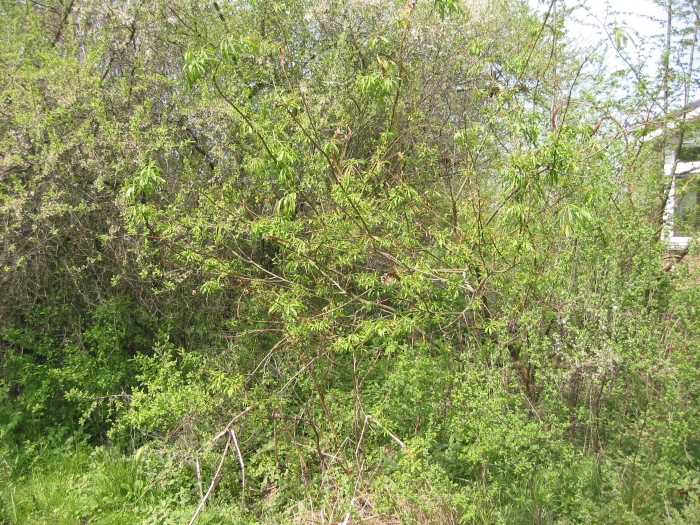Sakhalin Willow
(Salix udensis)
Sakhalin Willow (Salix udensis)
/
/

Rasbak
CC BY-SA 3.0
Image By:
Rasbak
Recorded By:
Copyright:
CC BY-SA 3.0
Copyright Notice:
Photo by: Rasbak | License Type: CC BY-SA 3.0 | License URL: http://creativecommons.org/licenses/by-sa/3.0/ | Uploader: Rasbak | Publisher: Wikimedia Commons | Title: Bandwilg_Salix_'Sekka'_struik.jpg | Notes: User created page with UploadWizard |












Estimated Native Range
Summary
Salix udensis, commonly known as Sakhalin Willow, is a deciduous shrub or small tree native to the riparian zones, wetlands, and moist forests of the Russian Far East, Japan, and Korea. It typically grows to a height of 10-15 feet (3-4.5 meters) and a width of 10-20 feet (3-6 meters). The plant features long, slender leaves and catkins that appear before the leaves in early spring. The catkins are generally not considered highly ornamental, but they do provide early-season interest. The bark of young branches can be attractively colored and adds winter interest.
Sakhalin Willow is valued for its ability to thrive in wet conditions, making it suitable for planting in areas with poor drainage or along water features. It is also used for erosion control due to its dense root system. The ’Sekka’ cultivar is notable for its resistance to rust caused by Melampsora spp. and is often chosen for this trait. This species is adaptable to a range of soil types, though it prefers consistently moist, well-drained soils. It can tolerate both full sun and part shade, but adequate water availability is crucial for its health. While it is generally low-maintenance, potential problems include susceptibility to pests like aphids and willow beetle. Pruning may be necessary to maintain its shape and remove damaged branches.CC BY-SA 4.0
Sakhalin Willow is valued for its ability to thrive in wet conditions, making it suitable for planting in areas with poor drainage or along water features. It is also used for erosion control due to its dense root system. The ’Sekka’ cultivar is notable for its resistance to rust caused by Melampsora spp. and is often chosen for this trait. This species is adaptable to a range of soil types, though it prefers consistently moist, well-drained soils. It can tolerate both full sun and part shade, but adequate water availability is crucial for its health. While it is generally low-maintenance, potential problems include susceptibility to pests like aphids and willow beetle. Pruning may be necessary to maintain its shape and remove damaged branches.CC BY-SA 4.0
Plant Description
- Plant Type: Shrub
- Height: 10-15 feet
- Width: 10-20 feet
- Growth Rate: Moderate
- Flower Color: N/A
- Flowering Season: Spring
- Leaf Retention: Deciduous
Growth Requirements
- Sun: Full Sun, Part Shade
- Water: Medium, High
- Drainage: Slow, Medium
Common Uses
Bee Garden, Bird Garden, Butterfly Garden, Deer Resistant, Erosion Control, Water Garden
Natural Habitat
Native to riparian zones, wetlands, and moist forests in the Russian Far East, Japan, and Korea
Other Names
Common Names: Willow, Sachalinvide, 꽃버들, Onoe-Yanagi
Scientific Names: , Salix udensis, Salix chilkoana, Salix makinoana, Salix amnicola, Salix mezeroides, Salix phylicoides f. angustifolia, Salix sachalinensis f. latior, Salix sachalinensis f. ligulata,
GBIF Accepted Name: Salix udensis Trautv. & C.A.Mey.